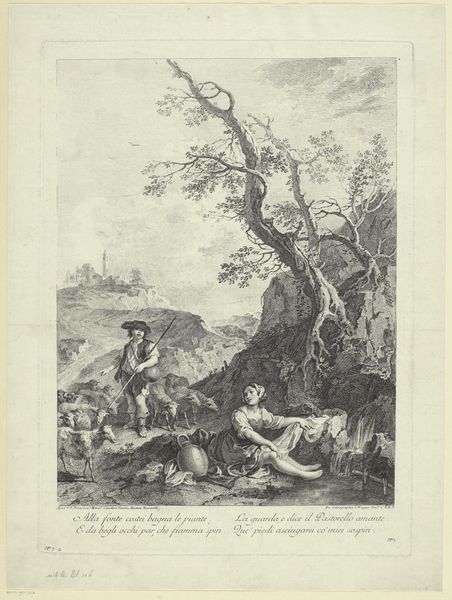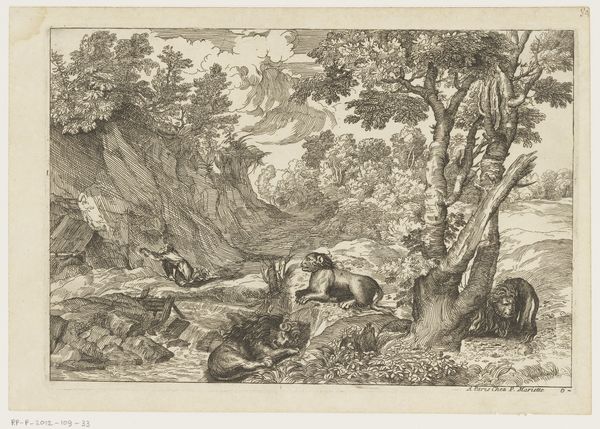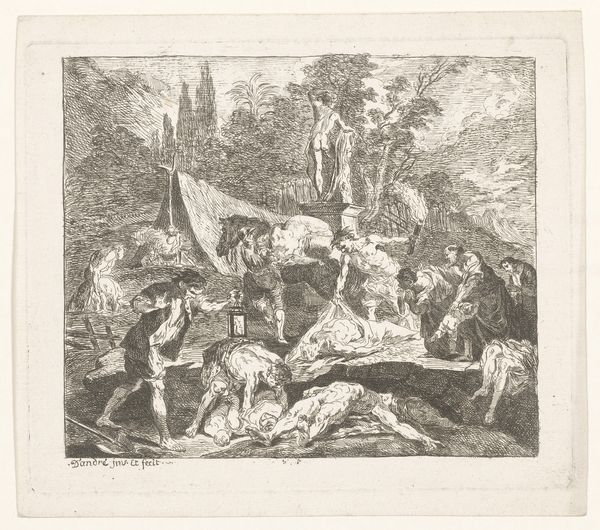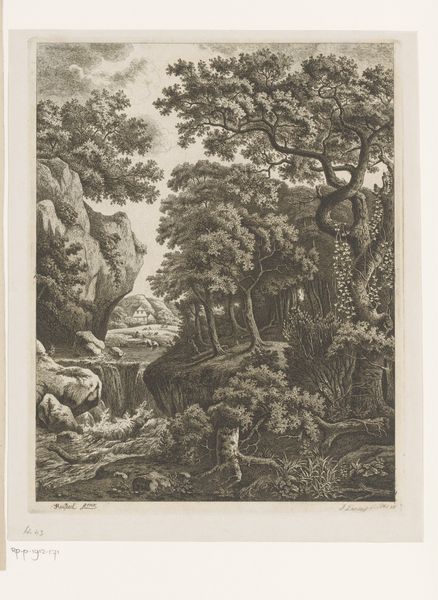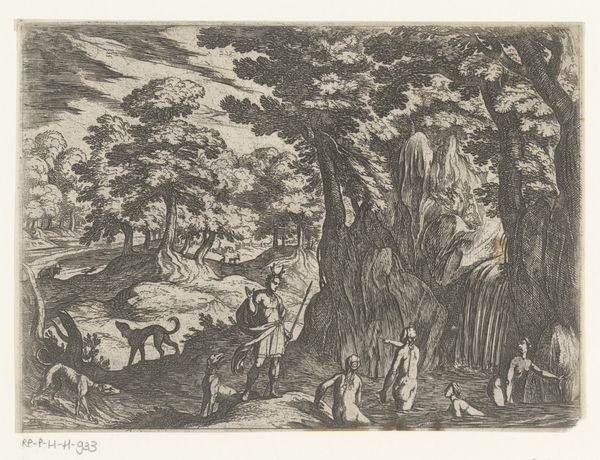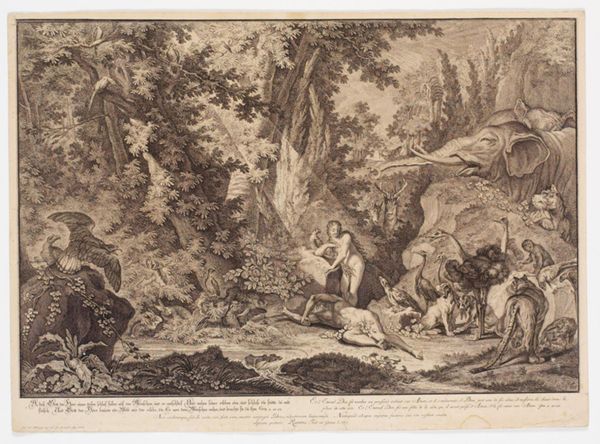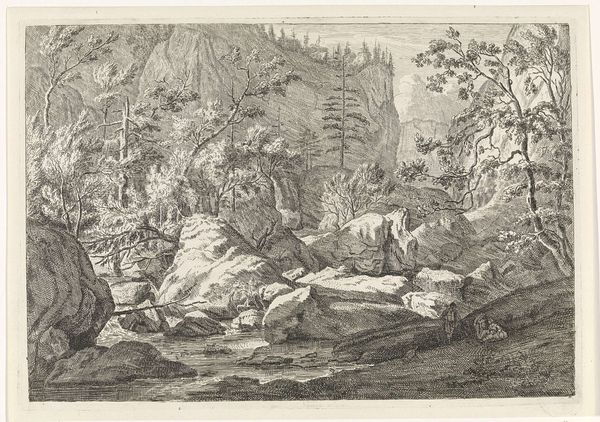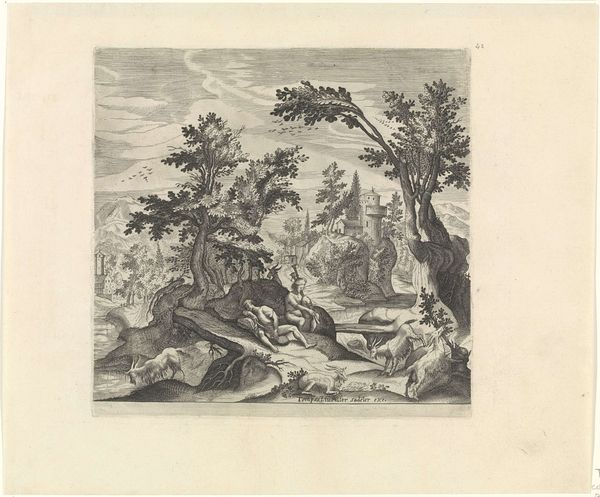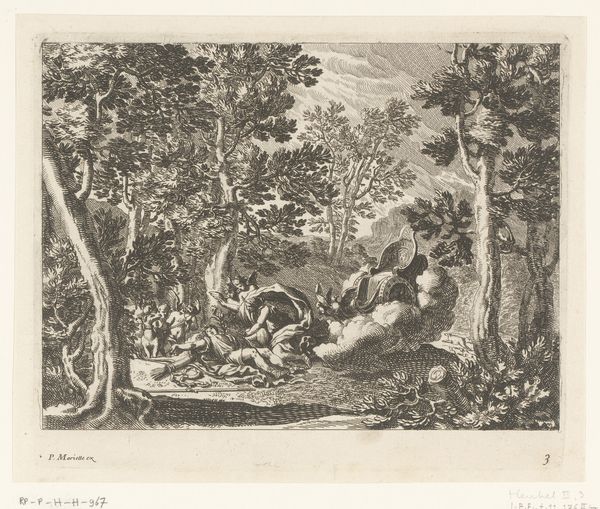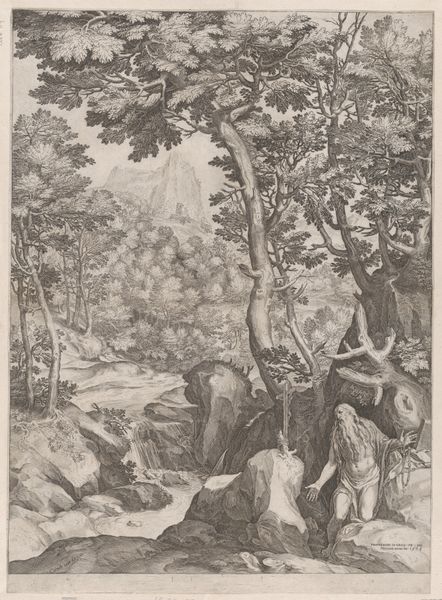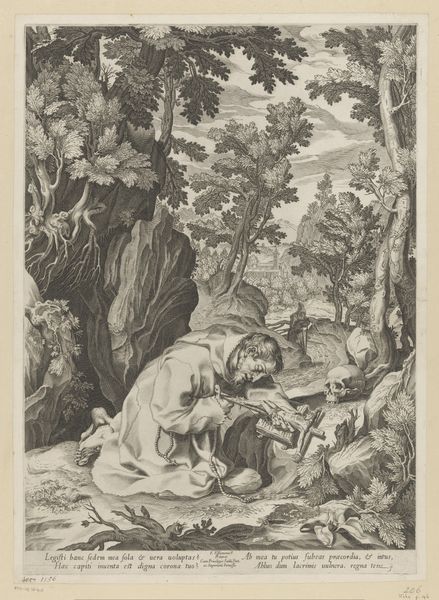
print, engraving
#
narrative-art
#
baroque
# print
#
old engraving style
#
figuration
#
line
#
history-painting
#
engraving
Dimensions: height 701 mm, width 494 mm
Copyright: Rijks Museum: Open Domain
Curator: This dramatic engraving captures a moment from the Battle of the Hydaspes between Alexander the Great and King Porus of India in 326 BCE. It was created by Bernard Picart in 1717. Editor: My first impression is one of absolute chaos, like a snapshot of violence and struggle frozen in time. The intense, intertwined figures seem ready to burst from the page. Curator: Picart worked during the Baroque period, a time when dynamic composition and theatricality were highly prized. He employed engraving, a printmaking technique that allowed for incredibly detailed linework to depict the scene's intense drama. Notice how his expert lines capture movement and emotionality, emphasizing the perceived heroism in the battle. Editor: The "heroism" seems… complicated, to say the least. While it’s presented as an epic clash, look closer – it’s essentially a colonial invasion. Alexander's campaign involved immense violence and subjugation against a foreign civilization. The text at the bottom glorifies such conquests under the guise of valor. Where are the voices, the perspectives, of those who suffered during these campaigns of so-called glory? Curator: You raise a vital point. Historical context is everything. The piece wasn't created in a vacuum. European attitudes of the 18th century heavily influenced Picart. What we see reflected here are biases that elevate European military achievements while conveniently omitting the suffering imposed upon colonized peoples. Consider the depiction of King Porus and his Indian forces—how does it contrast with that of Alexander’s army? Editor: There’s an immediate distinction! Alexander and his soldiers often display noble, idealized features and calculated poses, while Porus's forces are painted with… less nuance. This piece isn’t just about depicting a historical event; it's about solidifying a particular historical narrative. Looking at it through a modern lens, the print reveals so much about the self-serving ways power rationalizes itself through imagery. Curator: Precisely, understanding such embedded ideological frameworks can give us a greater understanding about how historical narratives get constructed through art. Thank you for that crucial counterpoint; I’ll consider these sociopolitical aspects for the piece moving forward. Editor: Thanks! It shows how art can teach us, forcing us to interrogate our relationship to power and visual culture, especially in the historical sense.
Comments
No comments
Be the first to comment and join the conversation on the ultimate creative platform.
